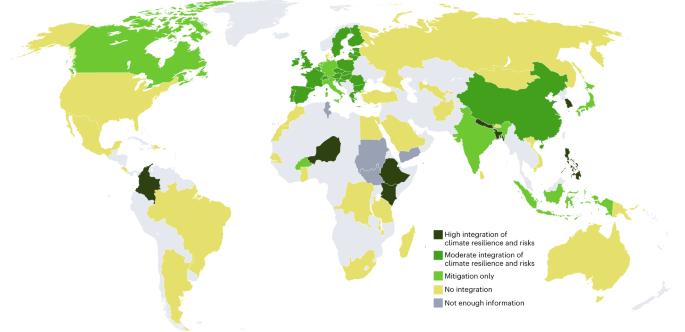为应对新冠肺炎而塑造富有弹性的未来
IF 25.7
1区 环境科学与生态学
Q1 ENVIRONMENTAL SCIENCES
引用次数: 3
摘要
今天的科学将复原力定义为在变化和不确定性中生存和发展的能力,这远远超出了 "反弹 "回到现状的能力。它包括吸收冲击、避免临界点、驾驭意外和保持选择的能力,以及面对危机和陷阱进行创新和转型的能力。这种能力的基础是五个属性:多样性、冗余性、连通性、包容性和公平性,以及适应性学习。在 COVID-19 之后,关于复原力恢复的讨论与最新科学之间存在着不匹配,最新科学呼吁做出重大努力,使复原力思维与可持续发展行动相一致。复原力的概念曾经是指 "反弹 "回到现状的能力,现在指的是在变化中生存和发展的能力。最新的复原力科学与 COVID-19 之后关于复原力恢复的讨论之间的不匹配要求复原力思维与可持续发展相一致。本文章由计算机程序翻译,如有差异,请以英文原文为准。

Shaping a resilient future in response to COVID-19
Science today defines resilience as the capacity to live and develop with change and uncertainty, which is well beyond just the ability to ‘bounce back’ to the status quo. It involves the capacity to absorb shocks, avoid tipping points, navigate surprise and keep options alive, and the ability to innovate and transform in the face of crises and traps. Five attributes underlie this capacity: diversity, redundancy, connectivity, inclusivity and equity, and adaptive learning. There is a mismatch between the talk of resilience recovery after COVID-19 and the latest science, which calls for major efforts to align resilience thinking with sustainable development action. The concept of resilience, once meaning the ability to ‘bounce back’ to the status quo, now refers to the capacity to live and develop with change. A mismatch between the latest science of resilience and the talk of resilience recovery after COVID-19 requires resilience thinking to be aligned with sustainable development.
求助全文
通过发布文献求助,成功后即可免费获取论文全文。
去求助
来源期刊

Nature Sustainability
Energy-Renewable Energy, Sustainability and the Environment
CiteScore
41.90
自引率
1.10%
发文量
159
期刊介绍:
Nature Sustainability aims to facilitate cross-disciplinary dialogues and bring together research fields that contribute to understanding how we organize our lives in a finite world and the impacts of our actions.
Nature Sustainability will not only publish fundamental research but also significant investigations into policies and solutions for ensuring human well-being now and in the future.Its ultimate goal is to address the greatest challenges of our time.
 求助内容:
求助内容: 应助结果提醒方式:
应助结果提醒方式:


